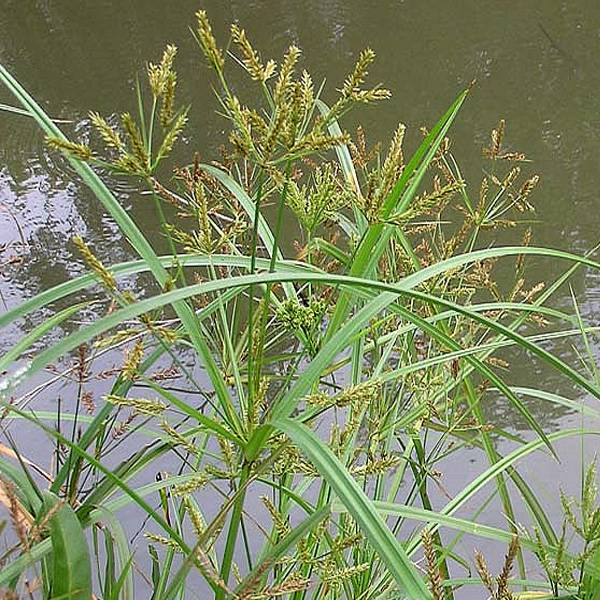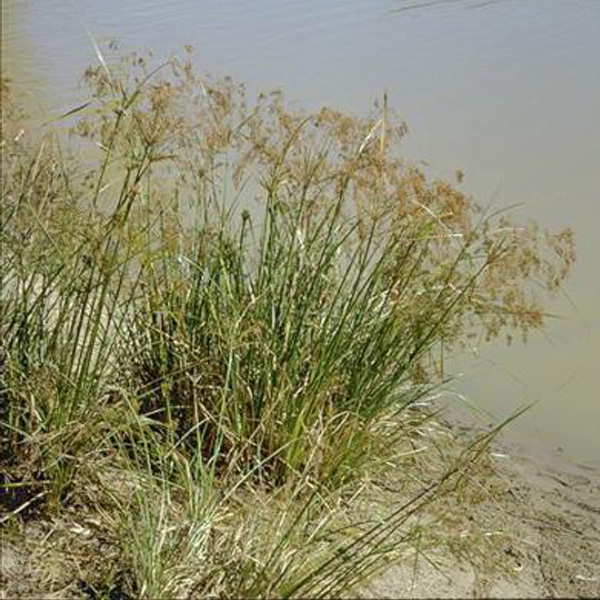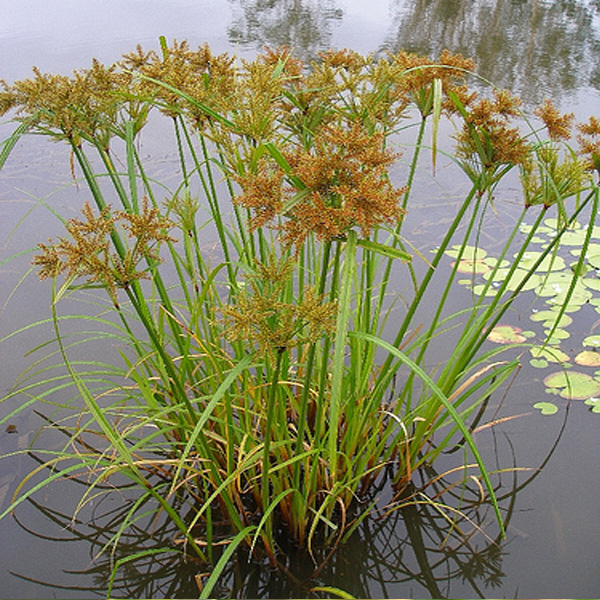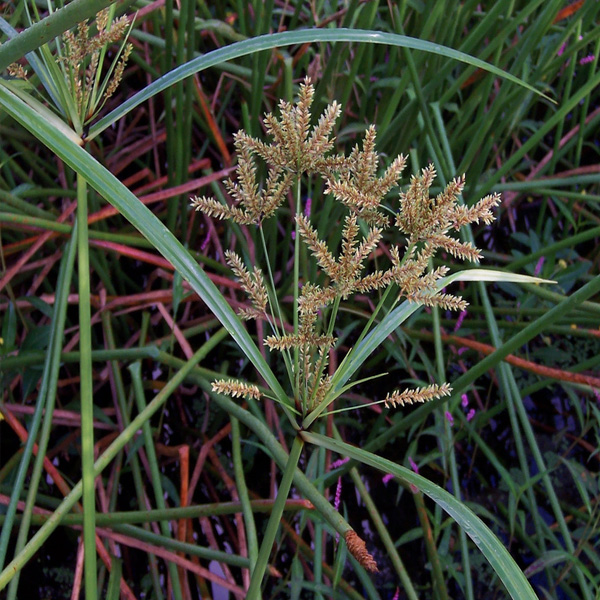Giant Sedge
weed identification
Giant sedge is an emergent plant with grass-like leaves, it produces tall, flat stems that reach up to 1.5 metres tall. It has olive green to brownish green foliage with yellow-brown flower spikes that cluster and form an umbrella shape. Giant sedge have fibrous roots and flowers during the summer months. The plant is tolerant to frost conditions but not drought conditions.
Commonly found growing near the edges or shallows of slow-moving or still water bodies.
It reproduces vegetatively via underground stems whose buds develop new roots and shoots. It also reproduces by seeds.
It spreads through underground stems (rhizomes) and seeds dispersed by water
Provides stability and erosion control on water banks as well as providing valuable habitat for water birds.
What does Giant Sedge look like?
Disadvantages of Giant Sedge
The robust growth of giant sedges can lead to several negative impacts on water bodies.
- Competitive effects on native vegetation
- Obstructs water flow and pumps
- Reduces food and habitat for fish and other aquatic animals
- Restrict water-based recreation
treatment
AQ200 Aquatic Herbicide + Wetting Agent – Chemical Herbicide designed to kill emergent weeds quickly. Use on mild to severe infestations.
Aquatic Weed Rake and Razor Combo – DIY physical removal. Ideal for mild infestations, sensitive water bodies or to aid herbicide treatment.
Aquatic Harvesting – Large amphibious machine that cuts and clears emergent aquatic weeds. Book this service for severe infestations or for larger water bodies.
prevention options
Aerating Fountains – Reduces the severity and likelihood of aquatic weed infestations. Use in any body of water.







